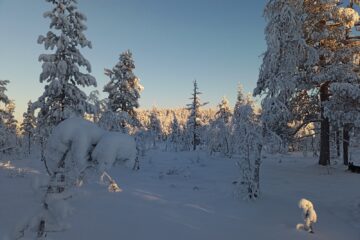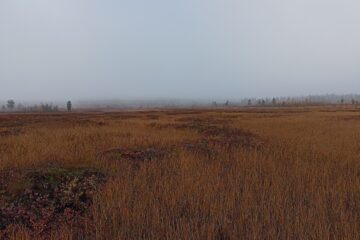For over 15 years I hear about the so called ponchosauna. As I’m a big fan of ponchos the idea seem to be great: You take a candle and light it under your poncho to get warm. You often hear how fantastic this works, but the truth is different.
As always with heat: Don’t burn yourself and don’t burn your important equipment, do not burn anything!
Problems with the ponchosauna
There are several problems with the ponchosauna like it is normally describes, clearly showing that the people who talk about it do not have a lot of experience with it:
- The heat output of a smaller candle is about 30W. That is not much for heating up. As a comparison a body produces about 40-80W when it is doing nothing. But this heat is directly at the body and isolated with clothes. A poncho can’t really heat up with 30W.
- Wind takes the heat under the poncho out pretty fast. So you will only feel an effect when there is no wind and you close your poncho good.
- Candles burn not clean. They produce carbon monoxide which is toxic in very small amounts. You need to keep your head out, which limits the effect (1.500ppm for 60 minutes are toxic). They also produce a lot of toxic particulates.
- If you take a bigger candle the heat output just highers slightly but the weight gets a lot more.
- If you extinguish the candle and want to use it again normally the candle wick brakes making the candle useless. Practically you can use the candle one time.
- When it is cold the candle will not burn properly.
These problems make the ponchosauna with a candle basically useless. But can we rescue the idea? Yes we can :-).
Instead of a candle you carry a small bottle of ethanol (ethyl alcohol, spiritus, alcohol) and an empty aluminum candle cup with you.
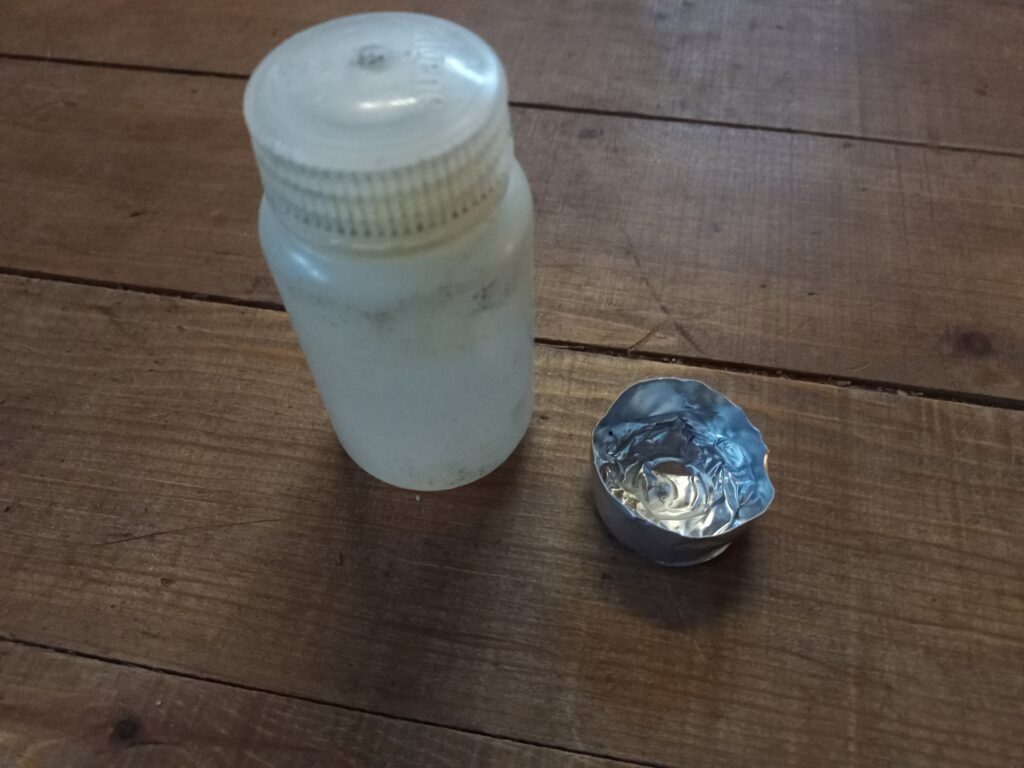
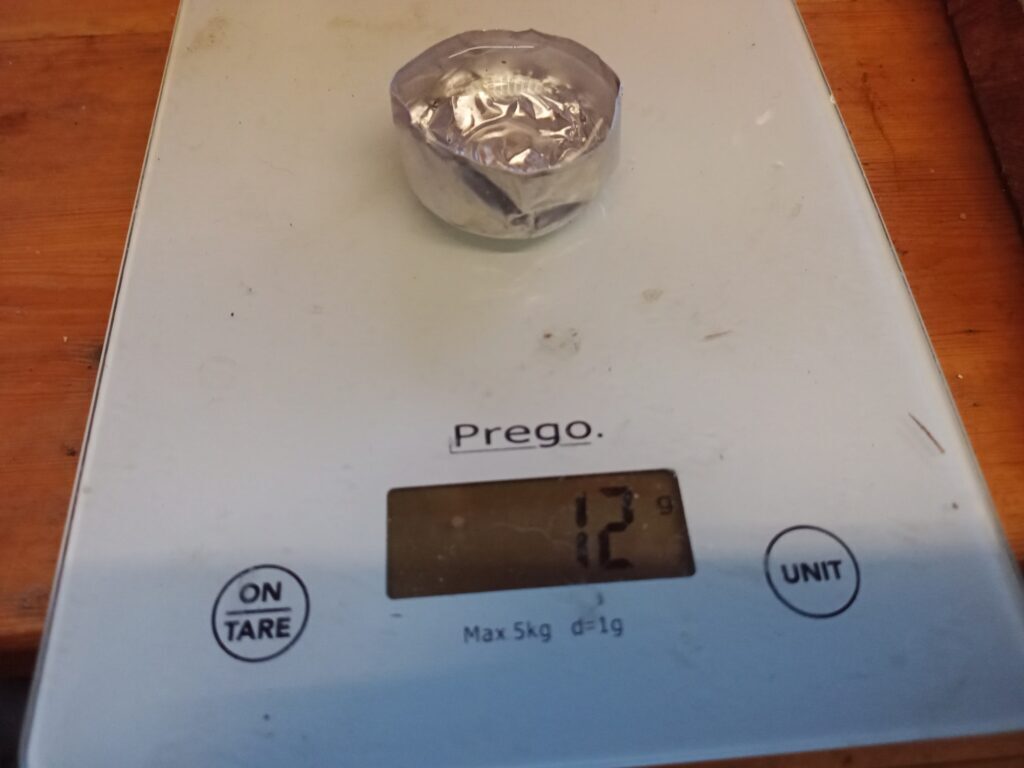
The advantages
Ethanol burns much faster. The cup is burned in about 10 minutes (depending on the temperature!). During this time it produces an average heat energy of over 500W. This is over 15 times more then the candle. During burning it is only producing carbon dioxide and water, no carbon monoxide or particulates. If you are really cold you can use more cups for higher energy output. The cups do not really weight anything.
Keep the bottle at the body, So that the ethanol stays warm also in cold temperatures and immediately burns nicely. You can open the front of your jackets under the poncho to let the warmth closer to your body. It is better to have a poncho with zippers or a poncho which is not possible to open on the sides to keep the warmth.
Ethanol is together with toilet paper a decent fire starter. Compress the toilet paper as much as possible to prevent too fast burning.
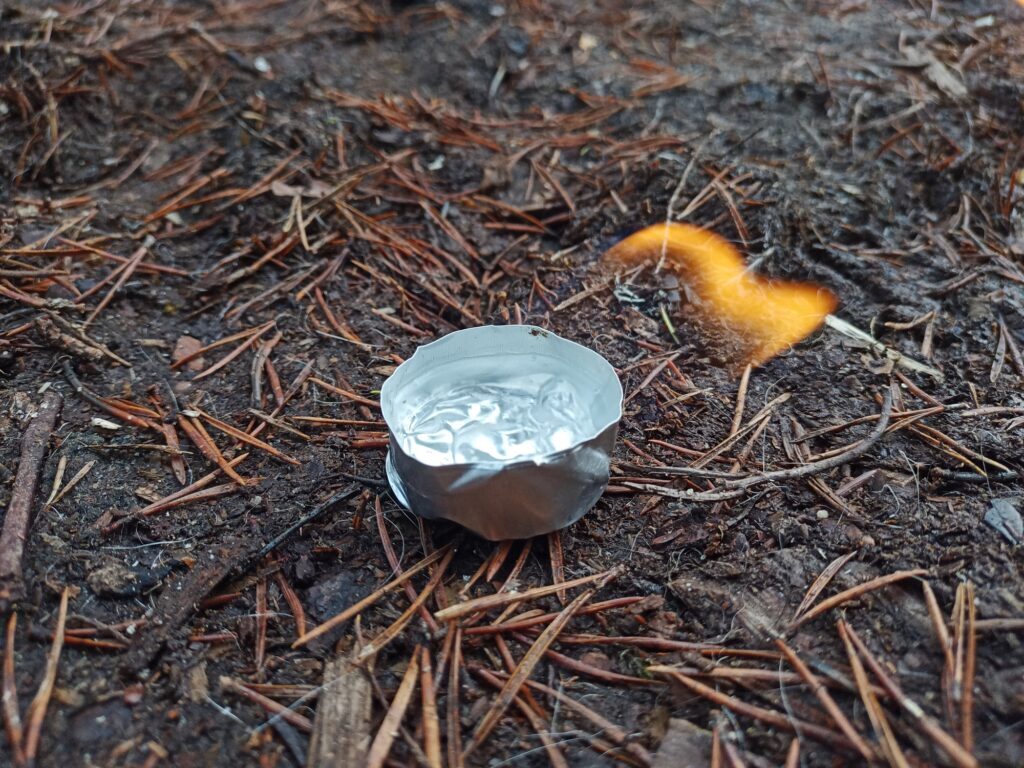
Carbon dioxide
The limit for carbon dioxide at a working place for 8 hours is 5.000ppm (0,5% in the air). Toxic effects start at around 10.000ppm.
Around two times carbon dioxide is produced during burning of ethanol. When you burn a 12g cup you get about 24g of carbon dioxide in the air under the poncho. Air has a mass of 1,2041 kg/m³ at 20°C on sea level. We count that we have in bad circumstances just 0,2m³ air under the poncho and absolutely no air exchange. If we release these 24g in just 0,2m³ we get a carbon dioxide concentration of 100.000ppm. The same time the oxygen gets less because of the burn, but that effect should not play a role. So we should not have the head under the poncho or close it completely for longer times either.
But it is possible to burn smaller amounts for example in a car or some other enclosed space like a tent. In a tent the air exchange can be so big, that there is no problem with toxic concentrations.
Verdict
But there are still some problems. You get the heat mainly from the front of the body and not on the head. The back of the body is hardly getting any heat when the poncho lies there flat. There is a bigger risk that some of your clothes or equipment burn or get too hot which is a no no. Often it is easier to make a small fire and lie next to it with the poncho. That is also the way how I make a nap during the day when it is cold.
That’s why I normally do not carry the ethanol thing with me as I also do not really miss it. On the traplines in winter I normally make some brake places and I do make less brakes (often making a break in winter is a lot of work before you can start to recover and you cool down in minutes). To be productive it is important to carry as less stuff as possible. But when I’m scouting or building new trap lines and am out the hole day with a lot of work I sometimes have it with me for the brakes.
As an emergency preparation it is a great tool. When I’m out with course participants I always have it with me.

